Commonly Known as Magnesium Sulfate, Epsom Salt is a form of magnesium sulfate commonly used in gardening to boost the supply of minerals such as magnesium and sulfur essential for plant development. Plants may benefit significantly from Epsom salt application if it is done in the right quantities through increased chlorophyll production and better absorption of important nutrients like nitrogen and phosphorus. But caution must be exercised concerning how much Epsom salt is applied. Overuse can have various negative effects on plants such as nutrient imbalances, changes in soil pH levels or even potential toxicity due to excessive amounts of magnesium. Maintaining plant health and promoting a healthy garden environment necessitates understanding the fine line for optimum use of Epsom salts. This article looks at what could happen if you overuse Epsom salts in your gardening endeavors, outlines signs that indicates they have been over applied while providing tips on how to avoid pitfalls that are common during this process.
Understanding the Effects of Excess Epsom Salt
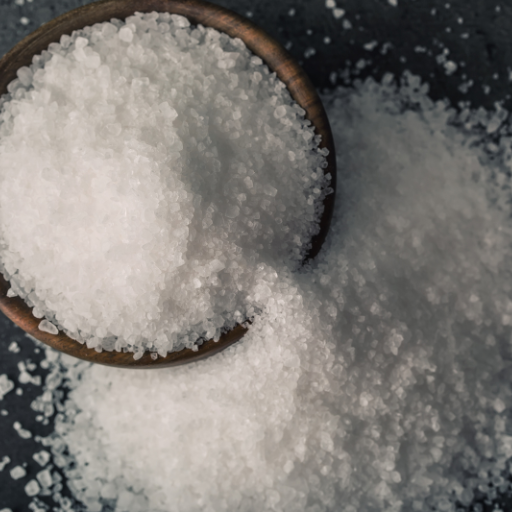
Overapplication of Epsom salt can cause many adverse effects on plants and soil life. One major concern is essential nutrient imbalance. High magnesium levels can interfere with calcium and potassium, which are important for plant growth rates. This nutrient competition may lead to retarded growth, yellowing leaves, and weak plant structure. Additionally, excessive amounts of Epsom salt can change the soil’s pH to be more acidic, rendering it unsuitable for some plants. Lastly, there is a high risk of significant magnesium toxicity that results in brown leaf edges and decreased plant vigour. It is therefore crucial to use Epsom salt in moderation to maintain plant health while monitoring the state of one’s soil.
How Much Is Too Much Epsom Salt for Plants?
The appropriate amount of Epsom salt for plants depends on understanding what the particular species need and the current soil conditions. Generally speaking, an evenhanded approach would be using about one tablespoonful per gallon of water (for foliar spraying) or mixing one or two tablespoons into the soil over a space equaling nine square feet. This should however be readjusted depending on factors such as; where is magnesium level in soil? What type of plant am I working with? Or even how healthy is my overall soil?
Technical Parameters:
- Foliar Application: 1 tablespoon per gallon of water.
- Soil Application: 1-2 tablespoons per 9 square feet.
- Soil pH: Regularly test to ensure it stays within the optimal range for the specific plant species.
- Magnesium Soil Level: The ideal soil magnesium concentration is between 25 and 50 parts per million (ppm).
Though these parameters act as guides; regular testing and monitoring are indispensable if any negative implications due to excessive application are to be avoided.
Immediate Symptoms of Epsom Salt Overuse
Immediate symptoms of Epsom salt overuse in plants can manifest quickly and clearly. One of the most direct signs is leaf scorch, which has irreversibly brown and dry edges. This is caused by the plant’s difficulty in absorbing nutrients due to so much magnesium disrupting soil balance. Also, the plants might experience hindered growth because they cannot take up enough essential nutrients like calcium and potassium. Another symptom includes chlorosis where leaves become yellow due to reduced iron absorption and other trace elements. Together, these signs suggest that nutrient equilibrium has been disturbed, requiring fast action such as flushing water through soil to restore its nutrient content.
Long-term Consequences for Soil and Plant Health
Using excessive amounts of Epsom salt over long periods can lead to major destructions on both the quality of a soil as well as plant health. In time, excessive magnesium accumulates leading to imbalances that are not conducive for proper soil structure or fertility values. This accumulation results in soil compaction lessening root health since it reduces water infiltration as well as aeration. The microbial activity of natural soils thus drops reducing nutrient cycling hence overall soil vitality declines with magnesium being their limiting nutrient .In plants however, chronic abundance of magnesium hampers uptake of significant minerals like calcium and potassium that makes them suffer from continuous deficiency symptoms; thus presenting themselves through dwarfing; low yield growth rates; susceptibility towards pests/disease attacks etc., Consequently; it is important that there should be a balanced approach on those practices related with magnesium supplementation thus avoiding long-term negative influence on soil & plant ecosystems
Identifying Signs of Overuse in Plants
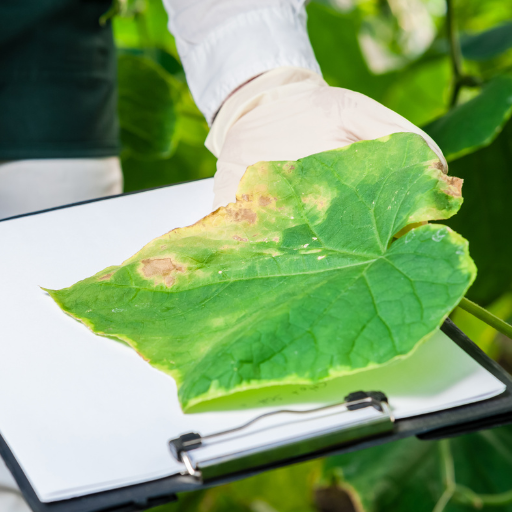
What signs should be observed in identifying Epsom salt overuse on plants? Among them is the leaf scorch, a phenomenon whereby the leaves’ edges become brown and dry. There could also be excessive leaf drop or wilting even when soil moisture levels are adequate. White crust or residue formation on the top layer of soil is another manifestation that salts have accumulated. These are clear indicators of overuse and they necessitate corrective measures like flushing out the soil and rebalancing nutrients to bring back plant health.
Leaf Yellowing and Burn: What to Look For
Leaf yellowing and burn are key indicators that plants might have nutrient imbalance or toxicities. Magnesium deficiency can be indicated by yellowing, which usually starts at leaf edges progressing inward with interveinal chlorosis being present too. On the other hand, there may be leaf burn due to excessive magnesium or any other salts resulting in scorched brown edges or tips. Monitoring these symptoms closely and conducting soil tests for confirmation is important. Immediate actions such as pH adjustment of soils plus nutrient adjustments can help prevent further damage on plants and restore them.
Stunted Growth and Poor Flowering
Stunted growth followed by poor flowering often indicates an imbalanced nutrition among plants commonly associated with excessive magnesium application. When magnesium content goes beyond its optimum range, it affects root system development making it hard for them to take up other vital nutrients like calcium, potassium etc. This nutrient unbalance causes slow plant growths as well as reduced flowers numbers produced. Additionally, high levels of magnesium can result into soil structure change reducing water infiltration rate as well as aeration hence aggravating developmental problems more. The solution lies in having detailed analysis of soils coupled with suitable amendments which will reset nutrient profile while improving soil conditions respectively. By doing this one ensures balanced nutrition giving rise to healthy vigorous growth including flowering.
Root Damage and Soil Imbalances
Root destruction hugely affects a plant’s uptake of water and nutrients, consequently leading to poor health and decreased growth rate. Root damage usually results from physical disruptions, pathogenic attacks or altered soil chemistry. Enhanced levels of magnesium can alter the structure of soils making them compacted thus less porous thereby retarding root expansion as well as functions. In addition, too much magnesium can obstruct the absorption of other important minerals like potassium and calcium leading into nutrient lockout that puts plants under further stress. Soil tests must be conducted on these sites and measures such as loosening the soil through aeration, adjusting nutrient levels among others taken to address problems arising from root damages so as to bring back balance in our soils. Proper practices ensure that roots remain healthy for optimum plant growth in future.
Correcting Epsom Salt Overuse in the Garden
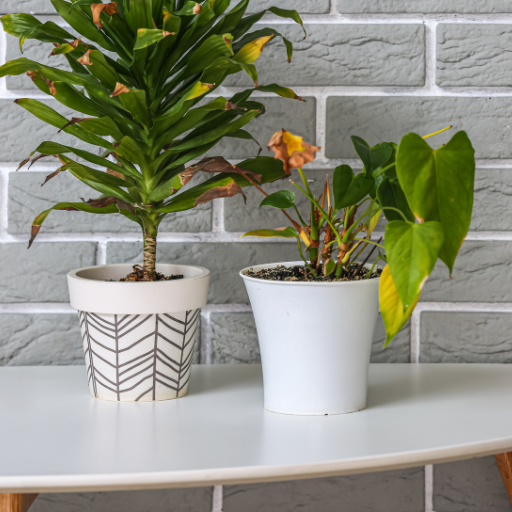
To begin with, immediately stop applying more Epsom salt so as to avoid more magnesium which has been accumulating further. Take a complete soil test to establish the exact nutrient imbalances and deficiencies. According to the results of the test, correct the soil using balanced fertilizers containing such necessary nutrients like nitrogen, phosphorus and potassium excluding additional magnesium. Improve soil structure by adding compost or other organic matter, raise microbial activity in soil for better absorption of nutrients. In sever cases excessive magnesium can be eliminated through leaching of the area by extensive watering. It is pertinent that routine monitoring as well as checking the soil must be practiced so that health of soils are kept intact for good plant growth.
Steps on How to Flush Excess Epsom Salt from Soil
- Gauging Epsom Salt Buildup Levels: Epsom salt buildup’s severity should be examined from this point onward. This involves observation of apparent symptoms in plants like stunted growth or yellowish coloration on leaves as an indicator for over accumulation of Mg by plants and its subsequent effect on them later. To get a full profile including amount of magnesium present in it, do a test.
- Leach Soil: Flushing out extra magnesium is what leaching entails wherein enough water is used to dissolve such kind of excesses. Distribute water uniformly all over affected area ensuring that 12-18 inches beneath are saturated enough.This method effectively reduces their concentrations because soluble salts such as excessive magnesia are removed from them.
- Improve Drainage: An improved drainage system enables salts to move out faster from soils.Incorporating organic material such as well-rotted manure or compost aids in improving water movement across profiles.
- Fix Nutrient Imbalance: After leaching, resample soil and repeat nutrient analyses. After getting the results, use fertilizers that provide nitrogen, phosphorus and potassium without adding more magnesium to correct nutrient imbalance. Select appropriate formulations for specific deficiencies as recommended by soil test results.
- Monitor and Adjust: Continual monitoring of plant health and regular soil testing are essential to track progress and make necessary adjustments keeping records of soil test results and any amendments applied in order to have an effective soil management plan.
How to Amend Soil After Overuse
The first step in amending soil after overuse is performing a comprehensive soil test to identify nutrient deficiencies and pH imbalances. To ensure accuracy, obtain samples from different parts within the overused area.Consumer Primary nutrients (N-P-K), secondary nutrients (Ca, Mg, S) as well as micronutrients (Fe, Mn, Zn, Cu, Mo, B).
Next, based on the findings of the test carried out on the soils, can be implemented. In compacted soils, aeration is required to facilitate root penetration and water infiltration, which may be done by mechanically aerating using coring or spiking equipment. For nutrient deficiencies, apply fertilizers according to the recommendations from the tests, ensuring the macronutrient balance does not get altered.
Other organic amendments promote useful bacteria’s action, also called microbial activity, which is vital for nutrient cycling and the overall healthiness of soils involved in this case.Incorporate organic matter like composts or incorporate green manure crops that develop slowly over time for better water retention and improved structure within a soil, acting as a long-lasting source of nutrients.
Again, soil pH should be adjusted as required. Liming could increase the pH of acidic soils. Sulfur or gypsum can lower the pH in alkaline soils. Maintaining an appropriate pH is necessary for optimal nutrient uptake by plants.
Lastly, it is important to incorporate regular soil monitoring programs to track progress and maintain soil health. This incorporates regular soil testing and visual observation of plant health status. In addition to aiding in the refining of soil management techniques through fine-tuning, when done properly, this will also ensure long-term productivity and sustainability.
Preventing Future Overuse: Tips and Tricks
Crop rotation is a vital strategy that helps prevent nutrient depletion and maintain soil quality. By planting crops with varying nutrition requirements and root systems, one breaks up pest life cycles, reduces diseases caused by soil-borne pathogens and balances the requirement for nutrients on the latter. It is also possible to minimize erosion, improve organic matter content as well as retain moisture in the ground via cover cropping (integrated). Precision agriculture methods include using GPS-guided grid sampling for soils tests and variable rate technology (VRT) which is employed for targeted fertilizers application determined by specific soil needs thus reducing chances of overuse. Additionally, adopting conservation tillage practices such as no-till or reduced tillage farming help conserve soil structure hence reducing erosion while maintaining organic matter levels. Lastly, staying updated with recent research work on soils will help toward informed decision making among farmers concerning sustainable land use strategies
The Science Behind Epsom Salt Toxicity

Magnesium sulfate, or Epsom salt, is commonly used in agriculture to correct magnesium deficiency in plants and soils. Nevertheless, there can be toxicity with too much application. High magnesium levels can prevent the absorption of other important nutrients such as potassium and calcium. This kind of nutrient imbalance can give rise to poor plant growth and development which exhibit symptoms such as leaf chlorosis, necrosis, reduced yield among others. What is more, the sulphate found in Epsom salts may contribute to soil acidity that may disrupt delicate pH balance system required for optimal uptake of plant’s nutrients; thus it becomes crucial to control the dosage and frequency of its application to avoid these complications.
Understanding Magnesium Sulfate and Plant Nutrition
Magnesium sulfate performs an essential role in plants by providing both magnesium and sulfur elements. For instance, magnesium is a fundamental component of chlorophyll molecule necessary for photosynthesis while sulfur forms part of some amino acids, vitamins and enzymes. The target Mg level for most crops on typical soils ranges from 25-50 ppm Excessive supply of Mg will lead to Ca uptake inhibition (Guo et al., 2010). Also K requires soil levels ranging between 2% -5% (Malavolta et al., 1997).
From a technical standpoint several research articles highlight the agronomic threshold for Epsom salt application: based on soil test results a typical application rate might range from 20-60 pounds per acre but should not be exceeded to prevent possible toxicity. Consequently, studies have established that optimum availability of magnesium as well as other nutrients is at a soil pH between 6.0-7.0 (Kelling & Petersen, 1994). Moreover achieving good plant nutrition management calls for adopting balanced approach which involves integration organic matter besides undertaking consistent soil testing to ascertain its status.
How Excess Magnesium Affects Plant Health
Excess magnesium in the soil can significantly affect plant health, leading to an imbalance in nutrient uptake. However, excessive magnesium can also interfere with calcium and potassium absorption. Levels of magnesium above the desirable range of 25–50 ppm may cause symptoms of calcium and potassium deficiencies, including short stature, poor root system development, and leaf chlorosis or necrosis.
Technical parameters from authoritative sources indicate that maintaining a calcium to magnesium ratio of around 6:1 to 10:1 is crucial for optimal plant health (Malavolta et al., 1997). Similarly ensuring the soil potassium level remains within 2% – 5% is vital (Kelling & Petersen, 1994). Too much Mg will upset this balance and increase chances of having lockouts of other nutrients especially when they are not available in sufficient quantities.Accordingly taking into account the soil test results, corrective actions may be done by adjusting recommended amounts of magnesium so as not to exceed a threshold of 60 pounds per acre. For continuous nutrient availability tests should aim at keeping pHs between six and seven units.
This paper emphasizes the significance of soils cation exchange capacity (CEC) in managing Mg levels. It may also mean that there could be too much nutrient retention hence requires specific management practices such as minimized tillage and use cover crops to avoid these complications that arise from high CEC soils coupled with high magnesium content which are common under some forms of agriculture practices. Monitoring and adjusting soil pH between 6.0 –7.0 helps maintain nutrient availability.
Research surveys show that Epsom salt has two main cationic components: Ca++ and Na+. These conclusions are based on extensive research by renowned agricultural scientists emphasizing ideal ratios for different plants (Malavolta et al.,1997). Continuously balanced fertilization over time ensures that the nutrient pool is maintained at a desirable level, which promotes healthy plant growth and productivity.
The role of pH in the soil with respect to Epsom salt toxicity
The principal focus on pH revolves around magnesium availability and nutrient balance as it relates to Epsom salt toxicity. Magnesium sulfate, commonly called Epsom salt, can cause magnesium toxicity if used indiscriminately especially in soils that have incorrect pH levels.
- pH and Magnesium Solubility: Normally, there is a range of 6.0-7.0 for soil pH at which nutrient availability, such as magnesium is optimal. When the soil is acidic (pH<6.0), this leads to less solubility of magnesium hence deficiency may occur despite adequate application. Conversely, when the soil is alkaline (P>7.0), magnesium solubility will increase thus increasing the risk of toxicities due to misuse of Epsom salts.
- Magnesium Interference with Other Nutrients: Excessive levels of Mg particularly under wrong pH conditions may interfere with Ca and K uptake leading to a respective unbalance in these nutrients which results into stunted growth as well as poor root development, leaf chlorosis among others. This can be controlled by maintaining calcium-to-magnesium ratio from a soil test between 6:1 and 10:1 and keeping potassium levels within 2% – 5 %.
- Soil Cation Exchange Capacity (CEC): High CEC soils are likely to hold more magneisum that further raises chance for toxicities while low CEC soils can only retain limited amount of Mg before it begins leaching out which minimizes chances for occurrence of poisoning effects due to its quantities stored in it or use tailored practices based on CEC values of soils determined through laboratory analysis for avoiding risks arising out from excessive amounts resulting from fertilizer treatments towards crops grown on them respectively Regular tests ensure safe magnesuim limits are not exceeded (preferably 60 lbs/acre) and thus prevents toxic symptoms.
Plant health and productivity can be protected from risks tied to Epsom salt toxicity through monitoring and adjusting of soil pH, alongside careful handling of magnesium levels with the help of soil testing and well balanced fertilization processes.
Specific Plant Responses to Too Much Epsom Salt
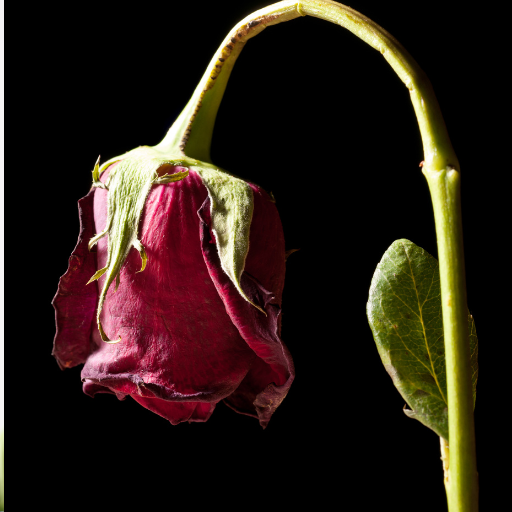
If an excessive amount of Epsom salt is given to plants, they could show a few toxicity symptoms. Some common reactions include leaf scorch or browning and drying out at the edges of leaves and interveinal chlorosis which characteristically leads to yellowing between the veins, while the veins remain green. Magnesium toxicity may also result in reduced overall plant vigor with stunted growth and poor root development. Additionally, some sensitive species can experience flower and fruit drop resulting into reduced yields. The sum of these signs stress the importance of following recommended rates and keeping nutrient levels balanced for soil.
Vegetables and Herbs: Sensitivity to Overuse
In veggies and herbs, tomatoes, peppers, and basil have been observed as responding too much to Epsom salt, causing various malfunctions before they have developed sufficiently.
For instance, research indicates that too much magnesium disrupts calcium uptake essential for stopping blossom end rot in tomatoes. Soil magnesium levels favorable for tomato growth range from 20 ppm to 40 ppm but maintaining above 150 ppm of calcium content. Peppers similarly respond by having magnesium-induced calcium deficiency due to over application of Epsom salt hence leading to poor fruit set and development. In high magnesium soils test limit for Essential oil production decreases when there is high Magnesium concentration thus indicating that soil test should not exceed 50ppm otherwise leaf chlorosis could develop.
Soil testing should be done regularly if one needs accurate measurements of soil’s magnesium contents. These tests will adhere to expected nutrient thresholds and prevent any possible toxicities that would affect yields or health status.
Effects on Flowering Plants and Shrubs
Overdoing it with Epsom salts on flowering plants and shrubs has many negative consequences affecting both their growth as well as aesthetic values. Magnesium provided by Epsom salts can upset this delicate balance in flowering plants such as roses and azaleas, particularly by blocking the uptake of calcium and potassium, which are crucial for normal plant growth. According to research data, roses have optimal soil magnesium levels within a range of 10-30 ppm where excesses lead to nutrient lockout causing leaf scorching and reduced flowers.
Magnesium induced pH changes in soil can cause flower color variation in hydrangeas, another popular shrub commonly affected. Such plants generally prefer slightly acidic to neutral pH conditions (5.5 – 7.0) with magnesium contents ranging between 15 ppm to 25 ppm. Consequently, when excessive Mg is present it provokes Fe and Mn deficiencies that can be manifested as chlorosis and stunted growth.
These findings are also observed on gardenias and camellias that are known to be sensitive towards higher magnesium levels because these shrubs thrive well under acidic soils with pH ranges of 5.0-6.5. In this case too much Mg makes soils more alkaline thus making it difficult for nutrients to be absorbed resulting into yellowing leaves or poor bud formation arising from high magnesic soil conditions. To sustain healthy growth and bloom in such species balanced soil condition would necessitate periodical soil testing not exceeding 20–30ppm Mg.
To prevent these detrimental effects, regular soil analysis, proper use of Epsom salt, and a full fertilization program should never be overlooked; this ensures the healthiest and most appealing flowering plants and shrubs.
How Epsom Salt Affects Trees and Other Large Plants
Epsom salt, which is largely composed of magnesium sulfate, may have several effects on the health of trees and large plants. Magnesium is a vital element for chlorophyll formation and photosynthesis in right amounts but too much will cause an imbalance in nutrients. For instance, if the magnesium levels are higher than 10 to 30 ppm expected in trees such as oaks and maples, they can exhibit symptoms like leaf discoloration or stunted growth. Also, higher magnesium levels hinder calcium and potassium uptake that leads to problems like poor root development as well as leaf curling.
To avoid nutrient lockout, soil pH should be maintained within a desirable range often between 5.5 to 7.0 especially in fruit trees whose sensitivity to pH changes varies from one species to another. In addition, nut trees also suffer from iron deficiencies as well as manganese ones when not properly managed with respect to magnesium levels that should be about 15-25 ppm. Lack of supply of these nutrients is characterized by reduced yield or interveinal chlorosis among other symptoms.
For regular checks on soil status, it is important that testing be done frequently so as for optimal well-being and growth in larger plants including trees can be attained. Therefore, through some carefully planned applications where there are no cases of harmful nutrient imbalances and alongside good fertilization plan that ensures balance of nutrient level; Epsom salts plays a role in keeping them healthy apart from promoting plant life more effectively than otherwise would be possible.;
Best Practices for Safe Epsom Salt Use
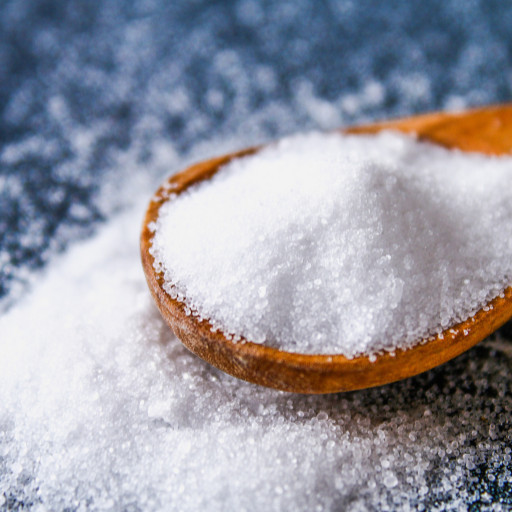
Firstly, always perform a soil test before applying Epsom salt to know the existing magnesium levels and soil pH. Just use if you have a deficiency and according to recommended amounts. For general use mix 1-2 tablespoons of Epsom salt with water in a gallon then apply it near the plant’s base once per month during the growing season. Over-application should be avoided since it can lead to problems like leaching of important nutrients and soil crusting.Just include it within an overall fertilization plan that includes other vital minerals needed for balanced growth, rather than relying too much on one amendment.Finally, observe plants for symptoms of stress or nutrient deficiencies and adjust application accordingly based on such observations and continuing soil tests.
Recommended Dosages for Different Plant Types
For different plant types, recommended dosages vary accordingly and must be carefully tailored to each plant’s specific needs:
- Vegetable Gardens: Use 1 tablespoon of Epsom salt per foot of plant height. Mix with water or add at planting stage in the soil. This is especially good for tomatoes and peppers which need higher levels of magnesium for fruit development.
- Flowering Plants: For roses, apply 1 tablespoon of Epsom salt per gallon of water. Administer this solution every two weeks as a foliar spray or soil drench throughout the growing season. Regular application will help produce vibrant blooms while strengthening root systems.
- Shrubs and Trees: Use 1/2 cup Epsom salt over an area equivalent to 9 square feet when dealing with larger plants such as shrubs and trees.Apply this dosage directly around the plant’s base ensuring uniform distribution.Repeat this procedure twice annually so as to spur healthy growth by minimizing deficiencies.
These dosages ensure balanced nutrient uptake without possible adverse effects like nutrient lockout or leaching. With these guidelines, magnesium levels in different plant species can be adjusted precisely, thereby promoting overall health and productivity.
How Often Should You Apply Epsom Salt?
How often you should use Epsom salt depends on the kind of crop and growing conditions. Usually, Epsom salt is recommended to be used every four to six weeks.
- Vegetable Gardens: Apply Epsom salts every four weeks. Technical Parameter: Apply a diluted solution containing 1 tablespoon to the base or as a foliar spray for a 12-inch plant.
- Flowering Plants: During the growing season, use it after each fortnight passes.Technical Parameter: Dissolve 1 tablespoonful of Epsom salt in one gallon of water and pour it around the soil or as a spray.
- Shrubs and Trees: Twice per year is all that is necessary.Technical Parameter: Spread half a cupful over an area equivalent to nine square feet starting at the base.
These durations have been determined through horticultural best practices so that plants do not have excess magnesium while maintaining enough nutrients for optimal growth and vigor.
Observing and Modifying the Use of Epsom Salt
In order to adjust the amount of Epsom salt, you need to observe growth patterns, soil conditions as well as overall plant health and determine whether it is necessary to keep the current magnesium levels. The first step is conducting a soil test to determine the level of magnesium in it. Regular testing of soil should be done before every application cycle so that any deficiency or excess can be identified. Visual indicators such as leaves turning yellow, poor flowering, or stunted growth may be necessary signs for adjustments in Epsom salt.
If there are any signs of magnesium deficiency or this has been directed by a laboratory report from an analysis of soils, consider a slight increase in either the number of times or quantities added depending on toxicity prevention limits. Alternatively, reduce rates for application in cases where too much magnesium is observed through leaf burn and nutrient lockouts.
Moreover, it is important to consider specific needs for that particular plant together with environmental factors like rainfall and type of soil that will affect availability of nutrients. Keep watering regularly and maintain proper fertilization practices that will enable uniform uptake and prevent over-application. This way healthier plants with vigorous growth can be maintained after sustaining proper levels of magnesium through such monitoring and adjustment approaches.
Reference sources
Frequently Asked Questions (FAQs)
Q: What happens if you put too much Epsom salt on plants?
A: Adding too much Epsom salt to plants can lead to toxicity issues, causing harm rather than benefit. Concentrated amounts of Epsom salts can disrupt the soil’s pH balance, impacting plant health negatively. It can even burn the roots, distress the plant cells, and make it difficult for plants to absorb nutrients properly.
Q: How much Epsom salt should I add to my plants?
A: The general recommendation is to add a tablespoon of Epsom salt per gallon of water for most garden plants. For potted plants, a teaspoon of Epsom salt per gallon of water is typically sufficient. Always consider the specific needs of your plants and the existing condition of your garden soil.
Q: Is Epsom salt good for all plants?
A: While many plants benefit from Epsom salt due to its magnesium and sulfate content, some plants don’t like Epsom salt at all. It’s important to research plants that suffer from magnesium deficiency or to check the specific requirements of your garden plants before using Epsom salt for plants.
Q: Can using Epsom salt prevent blossom end rot in tomatoes?
A: Epsom salt does not primarily treat blossom end rot as this condition is usually caused by a calcium deficiency, not a lack of magnesium. Therefore, adding Epsom salt to plants suffering from blossom end rot may not solve the issue. It’s crucial to ensure there is enough calcium in the soil to prevent blossom end rot in tomatoes.
Q: Will Epsom salt kill my plants if used incorrectly?
A: Yes, using Epsom salt improperly or in excessive amounts can harm or even kill plants. Gardeners should be cautious and follow recommended dosages to avoid detrimental effects.
Q: How can I use Epsom salt effectively in my home garden?
A: To effectively use Epsom salt in your home garden, dissolve 1 cup of Epsom salt in a gallon of water and apply it as a foliar spray or soil drench every 4-6 weeks. This method can help plants grow bushier and healthier, especially for those suffering from magnesium deficiency.
Q: Are there specific plants that benefit more from Epsom salt?
A: Plants like peppers and tomatoes are known to benefit from Epsom salt as they often need magnesium to thrive. However, it’s essential to start with small dosages and observe how your plants respond before making it a regular part of your gardening routine.
Q: Can adding Epsom salt improve the garden soil?
A: Adding Epsom salt can improve garden soil by replenishing magnesium and sulfur levels, which are vital nutrients. This amendment can help plants that suffer from deficiencies grow more vigorously but should be used responsibly to avoid overuse.
Q: Why do gardeners add Epsom salt to their plants?
A: Gardeners add Epsom salt to their plants mainly to supply them with magnesium and sulfur, two essential nutrients that help plants with photosynthesis, overall growth, and the production of more vibrant flowers and fruits.
Q: Is there any reason to ever use Epsom salt for tomato plants?
A: Yes, using Epsom salt for tomato plants can be beneficial as it provides magnesium, which can help improve the health and production of tomatoes. However, it’s crucial to ensure the plants also have adequate calcium to avoid issues like blossom end rot in tomatoes.






